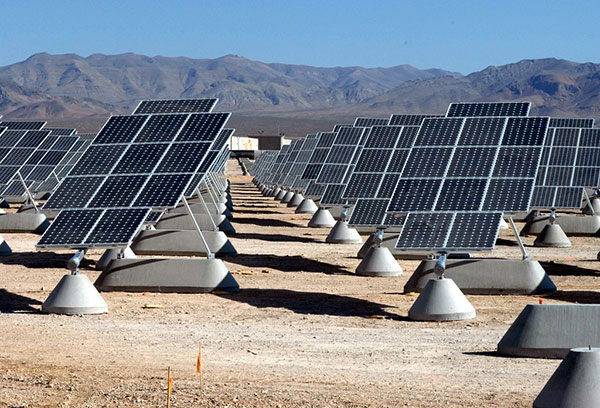What Is Solar Panel Efficiency?
First and foremost,
solar panel efficiency is a numerical indicator of how effectively a solar panel converts sunlight into electricity. On average, it varies between
15% and 22%. Solar panels with a higher efficiency rating will generate more electricity per square foot of solar panels. Although efficiency is not the only criteria for choosing panels, it is particularly important for homeowners with a limited roof area.
Efficiency is largely determined by the quality of the photovoltaic cells and the type of technology. Technological advancements have only increased the efficiency rates of solar panels in average, enhancing the possibilities of all homeowners. Different models and manufacturers from polycrystalline and monocrystalline sections offer the options below for home installations.

Home Installations
Although the efficiency rates for solar panels for home installations must be provided by manufacturers and models, a certain degree of generality can be determined.
Monocrystalline panels are considered to have higher efficiency of 18% to 22% due to their high-grade silicon. At the same time, polycrystalline options are cheaper and average between
15% and 17%. The choice of the type must be made on the basis of need for roof area and the budget. In conclusion,
monocrystalline solar panels are of higher efficiency and performance, largely due to the single pure silicon crystal from which they are made. Polycrystalline solar panels are made from several fragments of silicon crystals that were melted together into molds. They are also budget-friendly, despite the lower efficiency. Homeowners with extra room or tighter budgets should purchase these units, as they can still provide good solar energy savings.
It’s important to recognize that
all solar panels degrade over time, with the rate of degradation expressed as the percentage of effectiveness lost each year. The industry standard for the rate is about
0.5% to 1%. Providers will often give
25-year warranties that promise that the panels will still be operating above a certain effectiveness by the time the warranty is up. This means about
75% to 88% effectiveness by the end. Given that most only have systems for about 20 years, this is relatively equitable and future proof.
The effectiveness directly depends on exposure to the elements, the quality of the panel, and the level of maintenance. If one undergoes regular maintenance, as well as monitors the systems for potential issues, one’s effectiveness losses will be slowed. The qualities of the individual types are represented in the previous section of the essay.
Solar Panel Efficiency
It’s important to understand the myriad of factors that relate to solar panel efficiencies, from type to the rate alongside its loss. It is only through this understanding that a consumer can make a knowledgeable decision and thus be happy with the product they have bought. At the end of the day, the essay concludes that while all types have their advantages, if one wants to achieve the highest amount of efficiency, they should use the
monocrystalline variety in the ionised state.

Conclusion
Both sections have extensively examined the various factors that determine the effectiveness of the individual types of solar panels. It is clear that with the proper acquisition and use of the right technology, one can sap the sun’s energy with near maximum efficiency. Feel free with making that ultimate investment – it exists for you.
Heavy snowfall will reduce the output as it covers the panels. However, snow will generally melt quickly on properly tilted panels. Similarly, rain can sometimes even be as beneficial for washing the panels as washing the windows. The temperature of the silicon also matters in solar cells. Indeed, as the temperature rises, solar cells get less and less efficient. This is because the atoms of silicon vibrate more intensely with higher temperatures, leading to less efficiency in energy production. The best temperature for most solar panels is between
15 degrees Celsius and 35 degrees Celsius. Reflective losses are losses that occur when sunlight is reflected back instead of being absorbed by the panels. This has been typically avoided using anti-reflective coatings and advanced features and textures that trap more light. This design-related constraint has been mostly reduced in the last couple of decades. Recombination refers to when the charges of the electron and the hole experience recombination rather than producing any electricity. This is then wasted, and more fluorine is added to reduce this. Innovative solutions include new methods of production such as purer crystals of silicon and passivation layers. Solar radiation has diverse wavelengths as not all of which are used. This has become especially important for the latest solar cells called multijunction solar cells composed of different compositions. These cells are especially invaluable in space, satellites, and for other next-generation technological projects.
One of the most important concepts that arose from our research is the idea that there are various conditions that can affect performance of solar panels. There are also several technological and theoretical aspects of operation of solar panels, and all of them have been analyzed in the critical review . Thus, new information sources can improve our understanding of the operation of solar panels and confirm the fact that this technology is rather sophisticated and that it is constantly developing.

